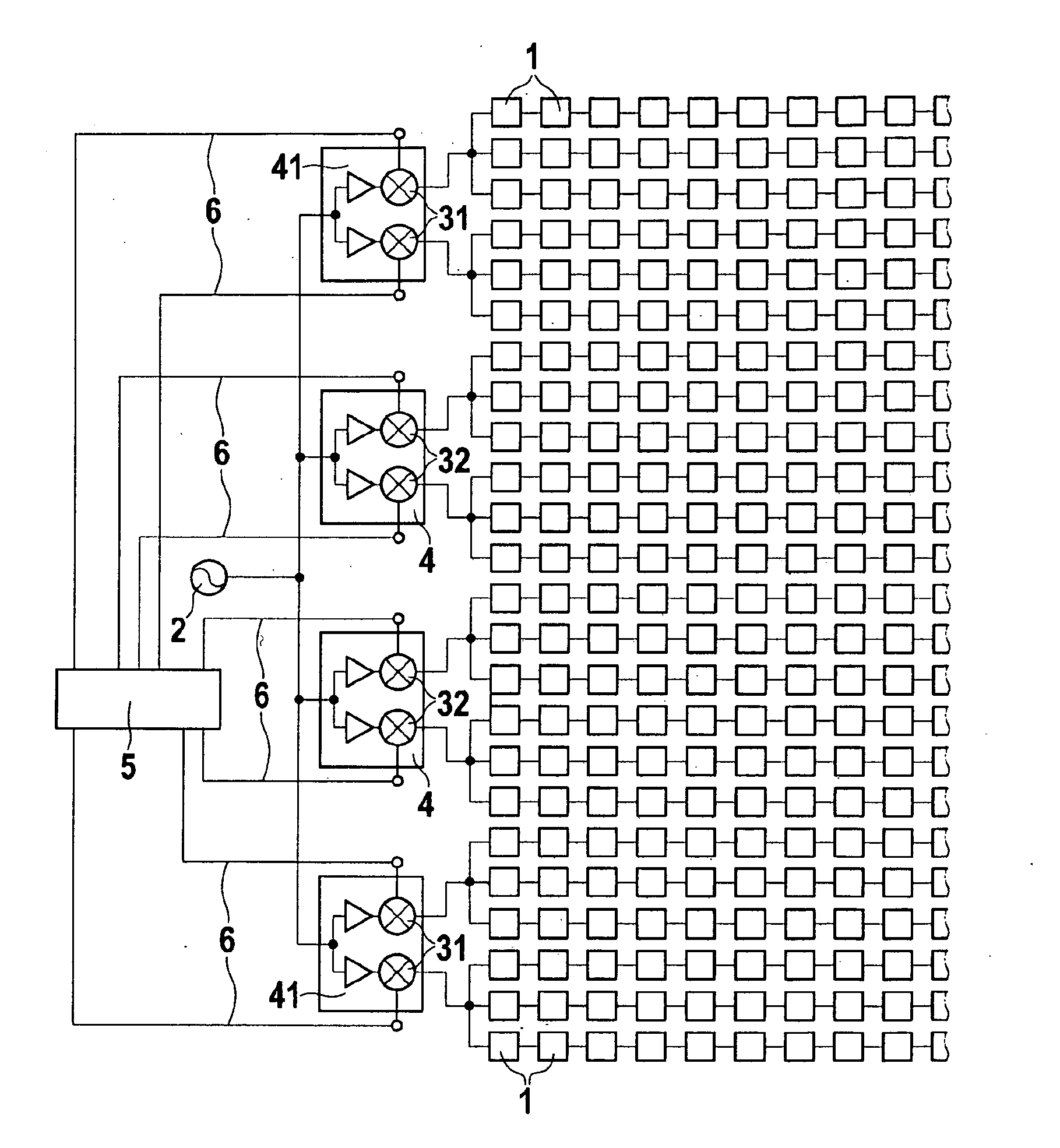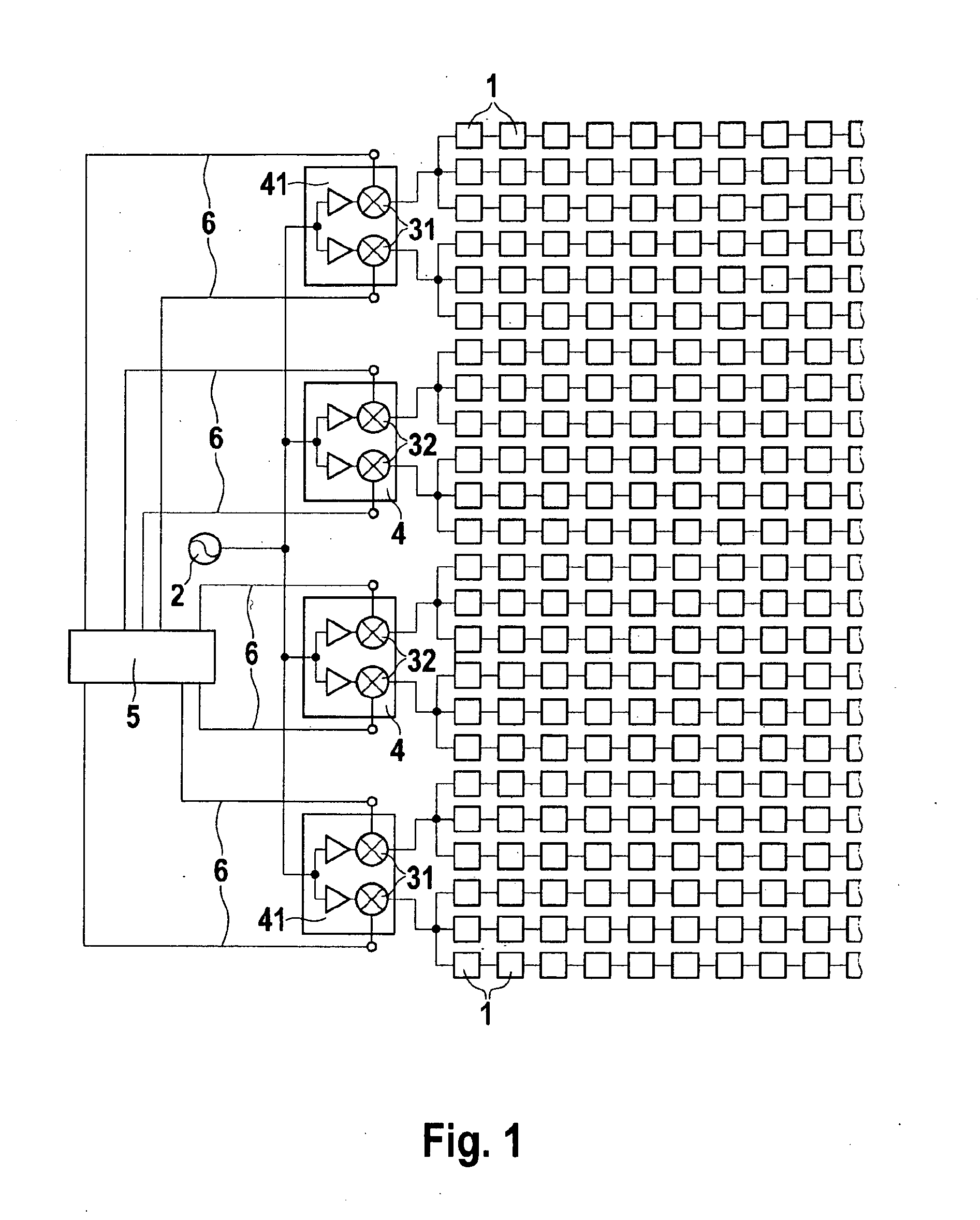Monostatic Multi-beam Radar Sensor, as Well as Method
a radar sensor and multi-beam technology, applied in the field of monostatic multi-beam radar sensor, can solve the problems and achieve the effect of saving surface space and wiring expens
- Summary
- Abstract
- Description
- Claims
- Application Information
AI Technical Summary
Benefits of technology
Problems solved by technology
Method used
Image
Examples
Embodiment Construction
[0011]The present invention according to FIG. 1 provides a matrix-type group antenna having antenna elements 1 for the monostatic operation. A high-frequency source 2 of 77 GHz, for example, is connected to antenna elements 1 via mixers 31, 32. In the exemplary embodiment shown, three slots of antenna elements 1 are combined in each case and connected to a mixer 31 or 32. Mixers 31 or 32 may be implemented as MMICs. Two mixers 31 and 32 are situated together on one chip 4 or 41 in each case. In order to generate a different directivity characteristic for the transmit operation than for the receive operation, the outer two mixers 31 on chip 41 are switched to isolation mode, and the four inner mixers 32 on chip 4 are switched to transfer mode.
[0012]In receive operation, an isolating and a transferring mixer both supply identical output signals. If a directivity pattern is produced by digital beam forming (in-phase and amplitude-correct summing of the eight output signals) then the en...
PUM
 Login to View More
Login to View More Abstract
Description
Claims
Application Information
 Login to View More
Login to View More - R&D
- Intellectual Property
- Life Sciences
- Materials
- Tech Scout
- Unparalleled Data Quality
- Higher Quality Content
- 60% Fewer Hallucinations
Browse by: Latest US Patents, China's latest patents, Technical Efficacy Thesaurus, Application Domain, Technology Topic, Popular Technical Reports.
© 2025 PatSnap. All rights reserved.Legal|Privacy policy|Modern Slavery Act Transparency Statement|Sitemap|About US| Contact US: help@patsnap.com


